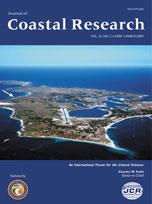Much of the coastal southeast Florida Peninsula is heavily urbanized, and many native environments have been destroyed or severely affected by urbanization. In an attempt to reconstruct potential natural environments, soil properties were used as a basis for recognizing prior landscapes. Pedological associations were adopted because they provided landscape features that were least modified by urbanization and they could be used as a unifying basis for categorization of native coastal environments. A geographic information system analysis ring was used for querying coverages for soil distribution patterns, vegetation, hydrology (drainage), topography, and geology. By simultaneously generalizing and recombining soil survey data, land use cover types, topography, and hydrology, it was possible to identify recurring patterns of soils, landforms, and vegetation. Results of this analysis produced 13 land systems with 25 subunits that included various types of lakebeds, tree islands, marshes, prairies, sloughs, sandplains, glades, marshlands, lagoons, estuaries, and beaches. The resulting map for potential natural environments in Palm Beach and Broward Counties complements conceptual ecological models for the Greater Florida Everglades Ecosystem, developed for the Comprehensive Everglades Restoration Plan. The Australian land systems approach, as applied in this study, provides insight into coastal environments that lie outside of ecological models for mostly protected areas inland.
How to translate text using browser tools
1 March 2007
Potential Natural Environments Based on Pedological Properties in the Coastal Conurbation of Subtropical Southeast Florida
Charles W. Finkl,
Natalia Restrepo-Coupe
ACCESS THE FULL ARTICLE

Journal of Coastal Research
Vol. 2007 • No. 232
March 2007
Vol. 2007 • No. 232
March 2007




